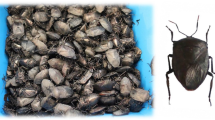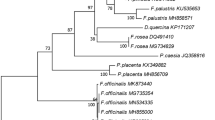Abstract
Dryopteris filix-mas (L.) Schott, commonly known as the male fern, is a good tænicide and is included in the pharmacopœias of all countries and also in the International Pharmacopœia. India, with her vast resources of drug plants, has many indigenous species of Dryopteris growing in the Himalayas, although the true male fern is not indigenous. With the view of finding suitable Indian substitutes of the official drug, phytochemical and pharmacognostical investigations on the following 18 members of the family Aspidiaceae were carried out. Dryopteris hirtipes (Bl.) O. Ktze., D. scotti (Bedd.) Ching, D. cochleata (Don) O. Ktze., D. barbigera (Moore) O. Ktze., D. serratodentata (Bedd.) Hayata, D. fibrillosa (Clarke) Hand-Mzt., D. rosthernii (Diels) C. Chr., D. paleacea (Don) Hand-Mzt., D. blanfordii (Hope) C. Chr., D. chrysocoma (Christ) C. Chr., D. ramosa (Hope) C. Chr., D. pulvinulifera (Bedd.) O. Ktze., D. splendens (Hk.) O. Ktze., D. sparsa (Don) O. Ktze., Ctenitis apiciflora (Wall) Ching, C. nidus (Clarke) Ching, Hypodematium crenatum (Forsk) Kuhn, Cyrtomium falcatum Presl.
This is a preview of subscription content, access via your institution
Access options
Subscribe to this journal
Receive 51 print issues and online access
$199.00 per year
only $3.90 per issue
Buy this article
- Purchase on Springer Link
- Instant access to full article PDF
Prices may be subject to local taxes which are calculated during checkout
Similar content being viewed by others
Author information
Authors and Affiliations
Rights and permissions
About this article
Cite this article
MEHRA, P., MITTAL, T. Indian Substitutes of Male Fern in Pharmacognosy. Nature 186, 722–723 (1960). https://doi.org/10.1038/186722b0
Issue Date:
DOI: https://doi.org/10.1038/186722b0
Comments
By submitting a comment you agree to abide by our Terms and Community Guidelines. If you find something abusive or that does not comply with our terms or guidelines please flag it as inappropriate.



